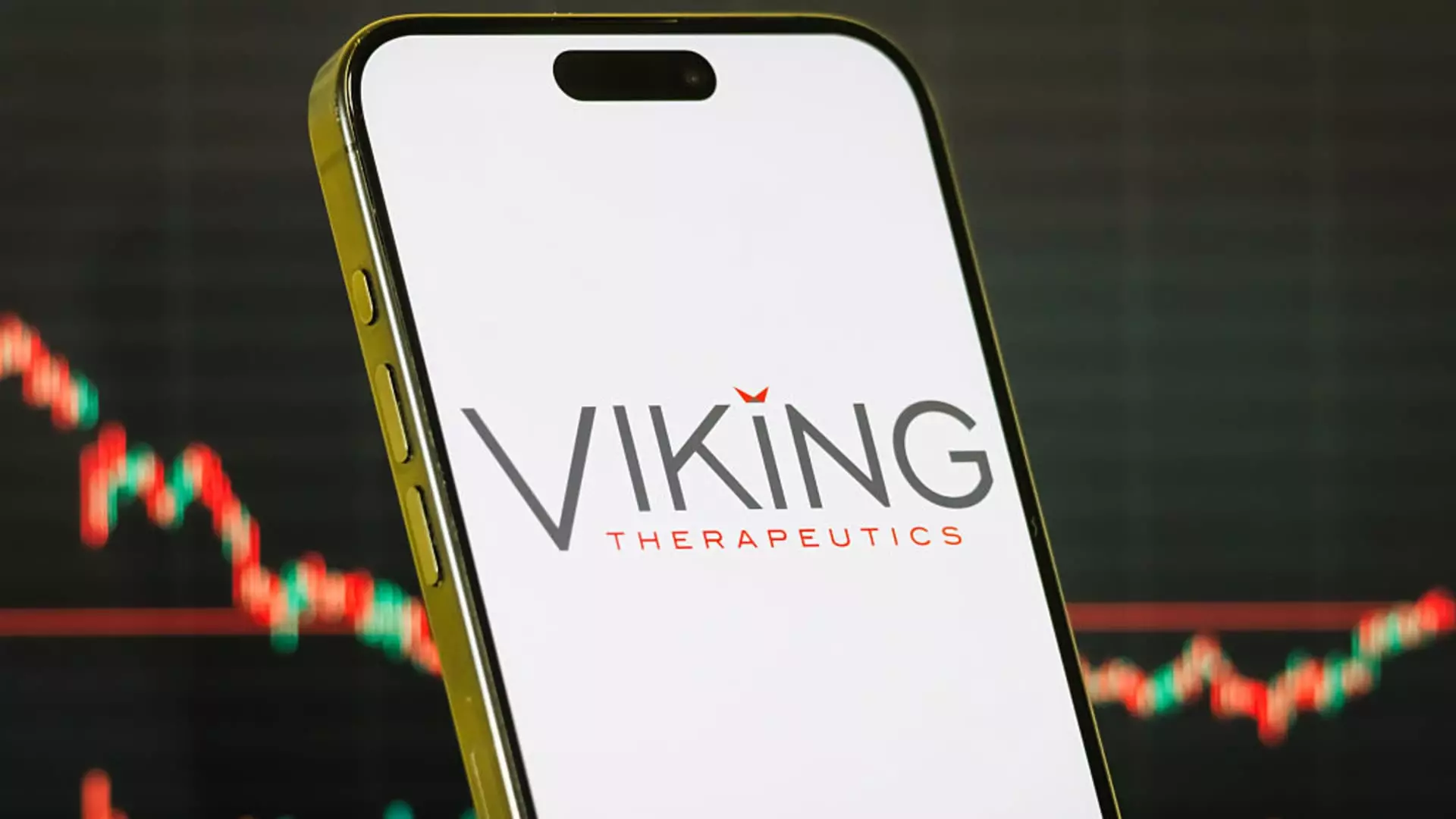In the ruthless world of biotech innovation, hope often hinges on early data, but Viking Therapeutics’ recent trial results shattered those illusions. Once hailed as a promising contender in the lucrative obesity market, Viking’s mid-stage data reveals just how treacherous this path truly is. The company’s flagship drug, VK2735, was expected to revolutionize weight management with its once-daily oral formulation. However, the actual results starkly underwhelmed investors, exposing the peril of overestimating the potential of promising pharmacological mechanisms without understanding the full spectrum of clinical complexities. The 43% plunge in Viking’s stock price isn’t merely a reflection of market disappointment—it’s an indictment of the overhyped narrative that biotech startups can effortlessly disrupt established pharmaceutical giants.
The Market Powerhouses That Dominate, and Why Viking Can’t Keep Pace
The weight-loss drug arena is no longer the wild frontier it once seemed; it is unmistakably dominated by behemoths like Eli Lilly and Novo Nordisk. Their advances aren’t just incremental—they are seismic shifts that leave startups like Viking in the dust. These industry giants benefit from decades of research, robust pipelines, and proven safety profiles. Their drugs, such as Eli Lilly’s forglipron and Wegovy from Novo Nordisk, set a high bar with substantial and sustained weight loss percentages in long-term trials. Viking’s failure to match these benchmarks—especially in the context of side effects and patient retention—raises critical questions about the company’s real capacity to innovate beyond the hype. It painfully highlights how challenging it truly is to develop a drug that is both effective and tolerable, particularly when competing against established, well-funded leaders.
The Flawed Promise of Short-Term Data and Overestimated Potential
The failure of Viking’s trial emphasizes a recurring flaw in biotech optimism: reliance on preliminary results without acknowledging the complexities of long-term safety and efficacy. The initial promise of losing up to 12.2% of body weight in a short-term study seemed impressive, yet the dropout rate—28% in just 13 weeks—is alarmingly high. When longer-term data are considered, this disappointment grows sharper. Eli Lilly’s phase three results demonstrate a deeper understanding of patient adherence and side effect profiles, with lower discontinuation rates over 72 weeks. Viking’s gastrointestinal side effects, predominantly nausea and vomiting, are not trivial; they are barriers that threaten the real-world utility of the drug. This overconfidence in early-phase data neglects the harsh lessons of the industry: drugs must withstand the test of time, tolerability, and sustained results. Viking’s failure to deliver on these fronts underscores the peril of placing too much faith in initial buzz.
The Larger Implications: A Wake-up Call for Innovation and Investment
Viking’s stumble underscores a vital, yet often overlooked, truth about pharmaceutical innovation—progress is rarely linear, and the market is unforgiving. It also highlights the flawed assumption that a novel mechanism, like mimicking gut hormones, guarantees success. The landscape is littered with promising molecules that faltered over safety, tolerability, or efficacy issues. This serves as a wake-up call that breakthroughs require more than just clever science—they demand meticulous execution, patience, and humility. Investors and industry players must recognize that early excitement often masks the arduous reality of getting a drug from concept to consumer. Viking’s setback should not be seen solely as a failure but as a sobering reminder of the importance of rigorous validation before jumping to conclusions and racing to market. In a field where billions are at stake, modest and incremental progress should be celebrated over the illusion of overnight revolution.


Leave a Reply